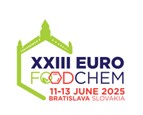Scientific journal
Journal of Food and Nutrition Research
Summary No. 4 / 2020
Ecem Bayram, N. – Canlı, D. – Gercek, Y. C. – Bayram, S. – Çelik, S. – Güzel, F. – Morgil, H. – Cevahir Oz, G.
Macronutrient and micronutrient levels and phenolic compound characteristics of monofloral honey samples
Journal of Food and Nutrition Research, 59, 2020, No. 4, s. 311-322
Nesrin Ecem Bayram, Department of Food Processing, Aydıntepe Vocational College, Bayburt University, Çaykara, 69500 Aydıntepe, Bayburt, Turkey. E-mail: ecem.nesrin@gmail.com
Received 20 July 2020; 1st revised 24 September 2020; accepted 29 October 2020; published online 7 November 2020.
Summary: This study aimed to obtain data on specific properties of various monofloral honey samples. Palynological, phenolic component, macroelemental and microelemental analyses were conducted and antimicrobial activities of honey samples were determined. In addition, protocatechuic acid for pine, lavender (from Isparta), heather (from Mugla) and cedar honey; gallic acid for carob, oak, lavender (from Antalya), chestnut, sandalwood and heather (from Antalya) honey; caffeic acid for linden, astragalus, chaste honey; syringic acid for rhododendron honey and the quercetin compound for cornelian cherry-citrus honey were observed to be dominant. As a result of the elemental analyses performed with inductively coupled plasma mass spectrometry, it was determined that elemental profiles of all of the honey samples differed, and the total ratio of macrominerals sodium, potassium, calcium, phosphorus and magnesium was the highest in the oak honey and the lowest in the cornelian cherry-citrus honey. According to antibacterial activity test results, Gram-negative bacteria were found to be more resistant to the honey samples compared to Gram-positive bacteria. In conclusion, the results of this study confirmed that the origin (blossom or honeydew) and plant source of the honey samples had an effect on their elemental content, phenolic component and antimicrobial activity.
Keywords: melissopalynology; phenolic composition; monofloral honey; mineral content; honeydew honey; total pollen number
Download:
(pdf, 352.63 Kb, 950x)










